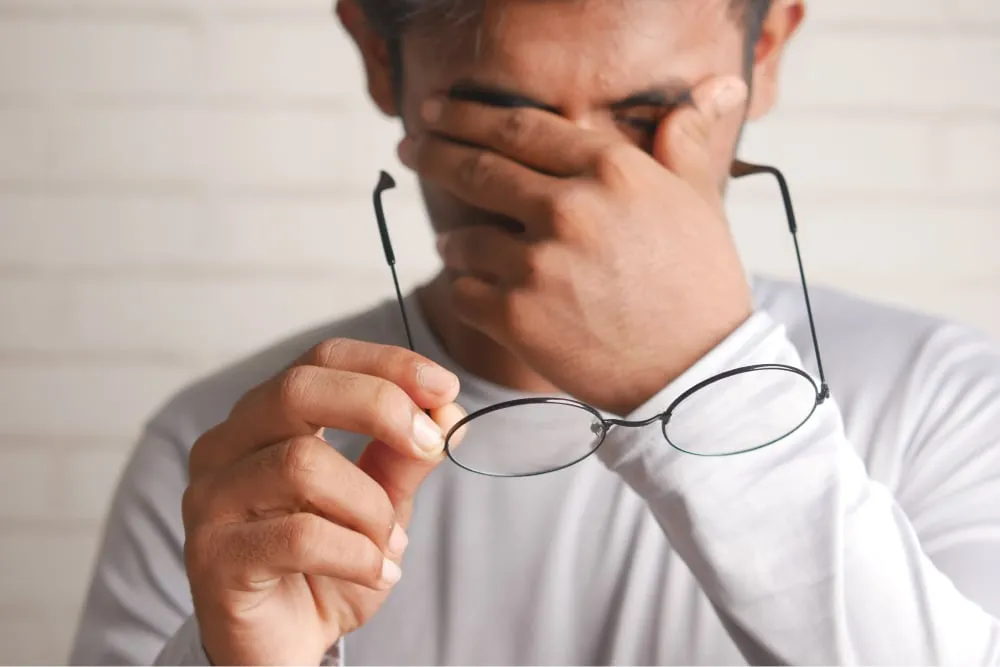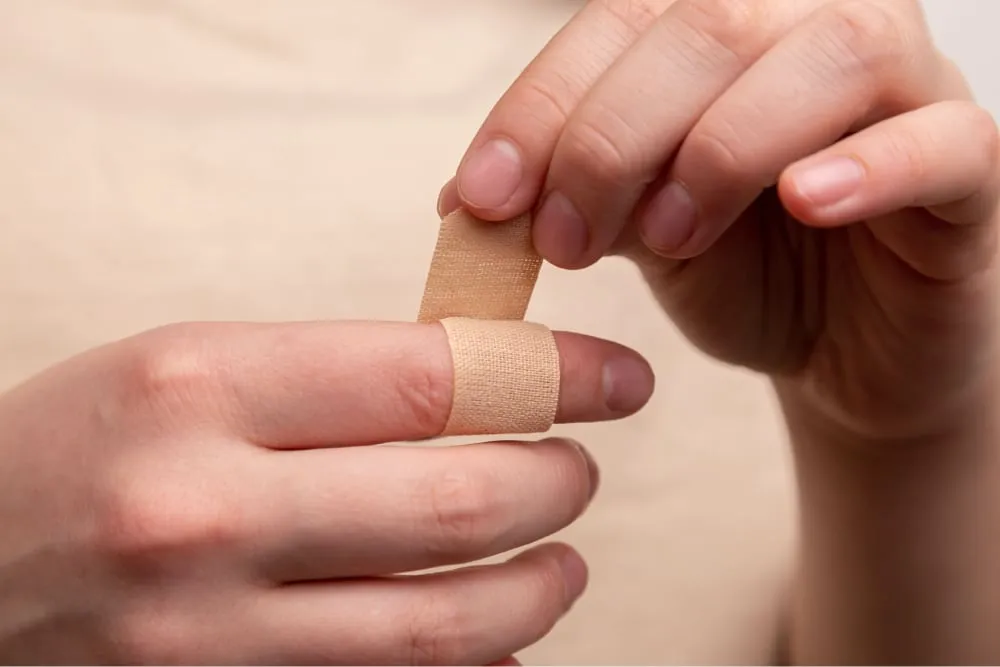8 changes to the hands and skin in people with AN
There are eight changes known to occur in individuals struggling with AN:
- Cold hands
- Bluish tint on the fingertips
- Damaged nerves in the hands (and feet), which may cause numbness
- Muscle spasms
- Possible bruising
- Swelling of the hands
- Vertical ridges in the nails and/or vertical stripes or white spots
- Dry skin
Why anorexia nervosa hands happen
The symptoms mentioned above happen because of several things changing in the body due to malnutrition from AN. Some of these symptoms may also be present in other eating disorders, such as bulimia nervosa.
Change #1: Cold hands
When someone does not consume enough energy, the basal metabolic rate (BMR) is affected. The BMR connects directly to the thyroid gland, which keeps the core body temperature constant.11 When someone is malnourished or suffering the effects of food restriction, such as in AN, the body temperature and basal metabolic rate drop, causing the hands to be cold.2
Additionally, when the core body temperature drops, there is a shift in the body's blood circulation. The body knows it has to adapt to ensure the person survives and directs the blood circulation to focus its energy on the vital internal organs instead of the hands and feet. This survival mechanism results in cold hands and feet.2
Another reason for anorexia cold hands can be iron deficiency, which contributes to cold hands and feet.8
Change #2: Blue fingernails
As the blood flow is decreased to the fingers, less oxygen reaches the fingertips. When skin or tissues are oxygenated, they should have a healthy pinkness that indicates vitality. With less oxygen, the normal pink color changes to blue.2
Change #3: Tingling and numbness from damaged nerves
If nerves are damaged, they will give out cries for help. One of the signs of nerve damage is numbness which happens when you may not be able to feel part of your body that is affected. It's possible that AN may damage nerves in the hands. This may also result from vitamin B12, vitamin B1, or other nutritional deficiencies, including fat and other forms of energy.3 Any of these deficiencies negatively affect nerves, leaving them open to damage.
Change #4: Shaking hands and muscle twitches
Muscle twitches may result from calcium and magnesium deficiency and electrolyte imbalances.4 Vitamin and mineral deficiency are common in AN, as are electrolyte imbalances.
Change #5: Bruising
With bulimia nervosa, repeated contact of the hands and teeth (from self-induced vomiting) can cause damage is bruising. With anorexia nervosa, bruising could happen even though there is no trauma to the hands due to vitamin C deficiency.9 In fact, the person may go to sleep at night and then wake up with bruises.
This happens because the type of collagen that builds the capillaries is not at adequate levels. This leaves small blood vessels weak and prone to rupture. In anorexia nervosa with a vitamin C deficiency, the small capillaries in the body will burst and cause bruising.
{{link-bank-two-column}}
Change #6: Swelling of the hands
It's also common for those with AN to have swelling, known as peripheral edema.5 Edema is a form of water retention caused by several factors, including pregnancy, renal failure, and insect bites.12
In relation to anorexia nervosa, swelling of the hands may occur as a result of:5
- Low levels of protein
- Electrolyte imbalance
- Hormonal changes
- Refeeding too quickly
- Abuse of laxatives, diuretics, and diet pills
Swelling can often be mistaken for body weight gain, so it's essential to look for other physical signs when diagnosing anorexia nervosa.
Change #7: Vertical ridges in the nails and/or vertical stripes or white spots
The symptoms an individual with AN is experiencing in their hands can occur due to multiple aspects of nutritional deficiency commonly seen in people restricting their intake. The vertical ridges that develop in the nails of someone with anorexia nervosa are due to the multiple B vitamin deficiencies that occur. The white stripes or spots in the nails are due to a zinc deficiency.6
Change #8: Dry skin
In AN, the percentage of body fat decreases. This is because fat stores in the body are used up as a source of energy. The individual isn't eating enough, and the nervous system and the skin thrive on fat in the diet. This means these tissues go 'hungry' for the fat.
Dry skin is known to be caused by a lack of fat in the diet and dehydration.1 Dry skin may occur in the early stages of AN. Topical creams can temporarily help relieve dry skin, but these won't replace the oils and fats you need from balanced nutrition. Skin needs to be nourished from within.
Articles you may be interested in:
Treatment for anorexia hands
Two primary types of treatment are needed for anorexic hands:13
- Nutrition counseling
- Medical treatment/observation
Nutrition counseling is especially important because it will take complete nutritional rehabilitation to heal AN entirely. AN is a psychiatric disorder that affects the entire body and can cause many medical problems if left untreated.
However, medical treatment is also essential because of the seriousness of the condition. It's common for those with AN to have electrolyte imbalances, which can cause death without immediate medical attention.
Articles you may be interested in:
A word of encouragement
Many people who have struggled with AN have recovered from the disorder. However, recovery from mental disorders such as this can be intense, as there are many things to address simultaneously—nutrition, medical, psychiatric, family, and emotional issues.
Remember, there is no such thing as "normal" weight or body shape. Everybody is different—you can learn to love yourself and the body you are in.
Make a vision of what you want your life to be like when you are fully healed—maybe creating a vision board for yourself could be helpful for you to progress in recovery. Give yourself time. Envision your healing and then take the actions to make it happen, one step at a time. With attuned treatment, including nutritional guidance, psychotherapy to address your mental health, and medical management, it is possible to see continual progress.











